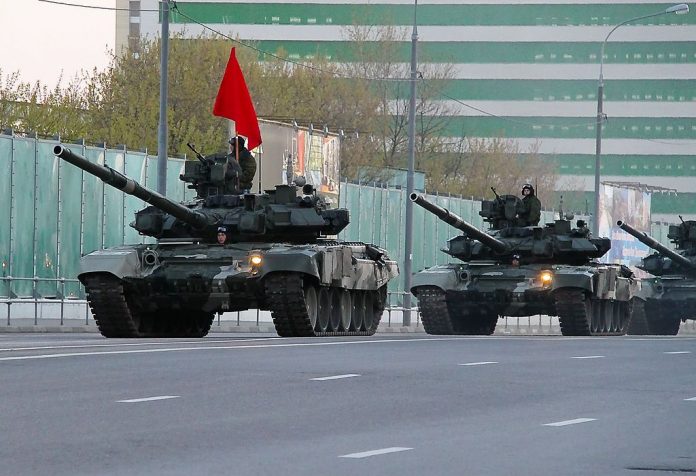On Sep. 17, news surfaced that Russia announced its intention to increase its deployment in the Russian Far East. Accordingly, Russian Defense Minister Sergei Shoigu said that reinforcements were being sent to its “eastern strategic direction” in response to rising tensions in the Indo-Asia-Pacific region.
Although Russia articulated that it will use 500 units of new and modernized equipment to support its navy’s Northern Fleet, it did not articulate what particular actors contribute to the rising regional tensions. But according to Moscow’s Carnegie Center analyst Alexander Gabuev, the said buildup was an effort to ensure its capabilities as it cannot be left defenseless in any case.
The worsening Sino-American rivalry at a time of the COVID-19 pandemic attributes to Russia’s weary behavior in the region. Both Beijing and Washington demonstrated their capability to wage conventional war against the other should miscalculations ensue in the contested regional space.
Coincidentally, the tensions have probably expedited Russia’s buildup in the far eastern frontier. This effort is part of Russia’s longstanding effort to up its defensive postures against any contingencies that pose insecurity in its stretched borders.
In 2014, Russia released its military doctrine delineating its intention to keep its strategic posture strong to deter any flashpoints in its far eastern region. The 2015 National Security Strategy also demarcates the same intention by ensuring operational readiness and nuclear deterrence.
For its 2017 Naval Doctrine, Russia also commits to keeping its navy relatively stronger despite the rapidly growing Chinese navy by investing in conventional and nuclear missile capabilities to strike enemy targets, while keeping in mind the prevalent American navies in the region.
When Russia released the 2016 Foreign Policy Concept, Moscow practically intends to shape the international system whereby a multipolar world configures to preserve Russian interests. These efforts include a stable home front and conducive backyard in Eastern Europe and Central Asia to showcase both its hard and soft power, and strategic partnership with China – which shares a long border with it from Central Asia unto the shores of the Pacific.
The certainty of uncertainty in the international system makes others view any defensive effort in their backyard as offensive. Simply that everyone has a vote in the international system to maximize its power relative to others to survive.
Instead of establishing a more secure frontier, increasing its defensive postures would ironically invite more friction from its neighbors, particularly China, because China’s engagement with Russia has always been to ensure it as a second-tier powerhouse in the region.
As regards border cooperation with China, Moscow entered the Treaty of Good-Neighborliness and Friendly Cooperation with Beijing in 2001, wherein Article 9 codifies that:
“When a situation arises in which one of the contracting parties deems that peace is being threatened and undermined or its security interests are involved or when it is confronted with the threat of aggression, the contracting parties shall immediately hold contacts and consultations to eliminate such threats.”
One can compare it to NATO’s Article 5 that an attack against one is an attack against all. Some even call it a new axis power as the 2010s entered a new great power competition. However, this legal instrument remains ambiguous as it only prescribes consultation, not an automatic rescue button between them.
This ambiguity has nevertheless enriched a comprehensive strategic partnership, spanning across economic development and military cooperation between Moscow and Beijing. In 2018, both countries have affirmed their deep defense ties to ensure their common interests in the region. The next year, they conducted the first-ever joint air force operations in the South and East China seas where they come to signal their willingness to up their security against the U.S. and its allies.
Yet, China will go at great lengths to prevent Russia from becoming influential in the region. Instead of letting the Russians doing it all alone, the Chinese may do well to accompany them in their strategic posturing. Moreover, Moscow’s energy expeditions in the South China Sea or even expanding diplomatic engagements in the ASEAN have proved quite difficult for Russia to impose its power to avoid triggering China.
Russia supports the Chinese position to use a non-confrontational approach in the South China Sea disputes in the 2019 ASEAN Regional Forum Security Outlook, while rebuking American attempts to strengthen a “divisive” and “anti-Chinese” Quadrilateral Security Dialogue with Japan, Australia, and India.
The Russian defense ministry’s public statement avoids giving names – like China – which poses insecurity to its far eastern frontiers. Russia knows its China-dilemma about its shared land border. But their strategic dependence has made them dangerously comfortable at the current state.
Currently, a geopolitical timebomb is in place with China in Vladivostok. Arguably, China is now playing a long-game to side with Russia against the U.S. But when the time is right, a relatively stronger and geographically advantageous China can outmaneuver Russia in their far eastern territory. This July, Chinese diplomats, journalists and internet users lambasted the Russian embassy in Beijing on social media for its 180-year commemoration of Vladivostok (formerly the Chinese city of Hanshenwai), annexed by the Russian Tsarist empire in 1860.
In conclusion, such buildup this year may likely stem from the desire to outmaneuver Chinese ambitions as well, aside from monitoring the growing American “anti-China” network in the region for a possible conventional war between the U.S. and China. But doing so may hamper proactive support for China’s stance in the region. Such perception may help anticipate the updates for the new Russian national security strategy this year and military doctrine soon. Optimistically for Russia, this may provide an offset for more ambitious maneuvers and presence downwards in East Asia. But if that is the case, Russia should continue the trend of increasing its footprint in the region – and possibly confront China.
The views and opinions expressed in this article are those of the author.

The author is a Manila-based defense analyst and international affairs academic who works and writes about issues and topics regarding the Great Power Politics of the Indo-Pacific, Philippine Strategic Culture, and ASEAN Studies. He currently pursues his master’s degree in International Studies at the University of the Philippines, Diliman.


